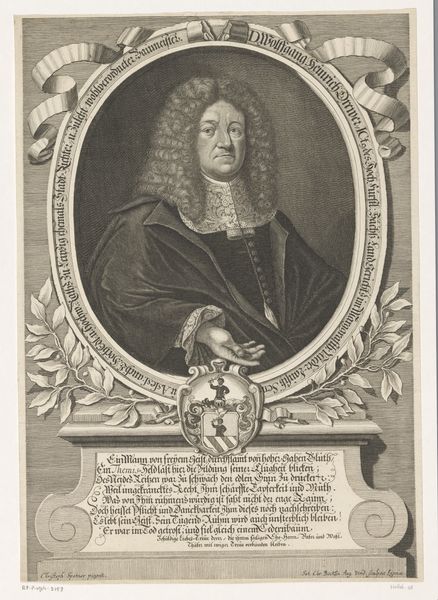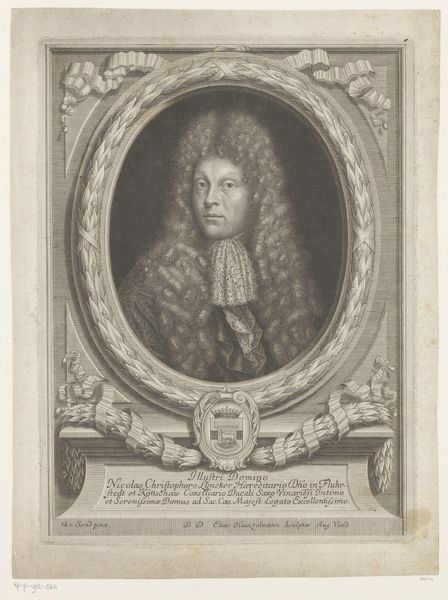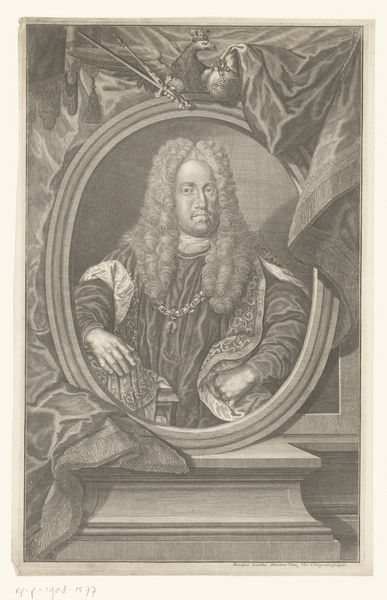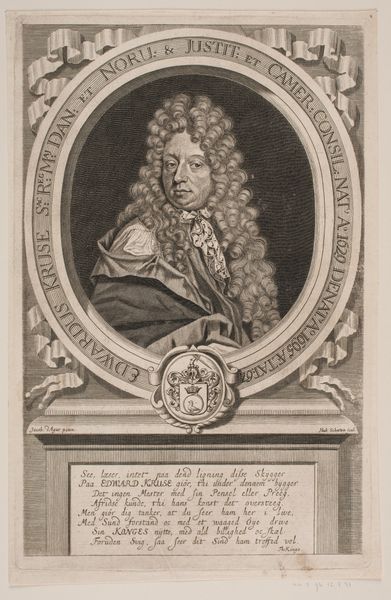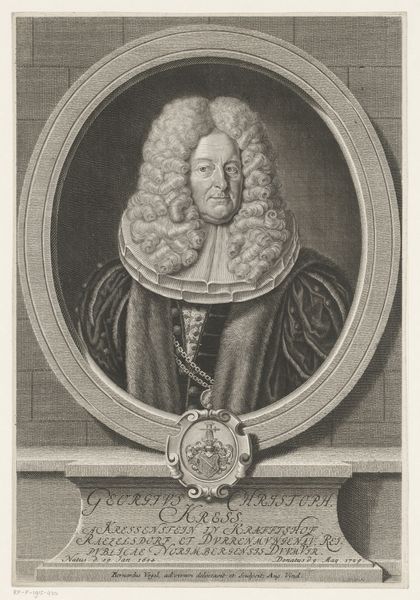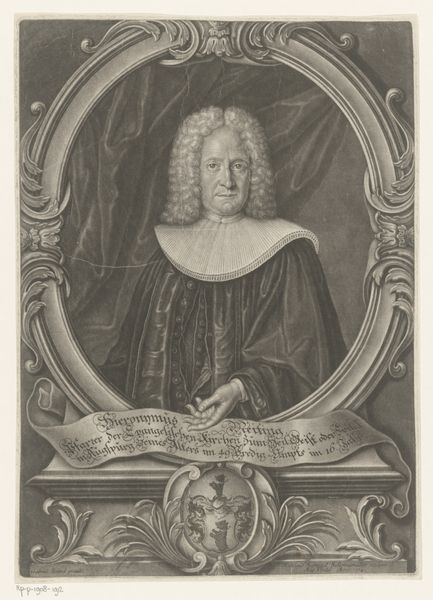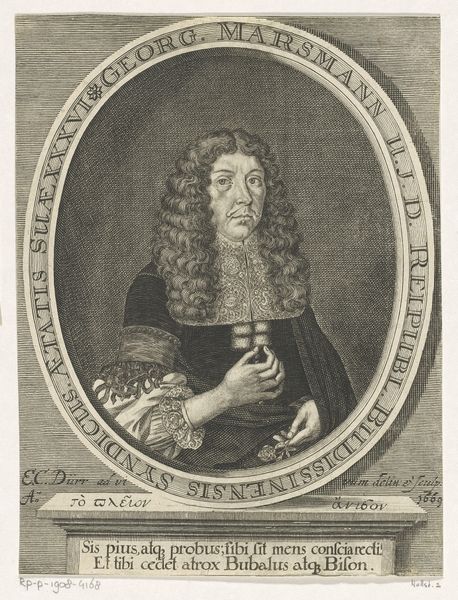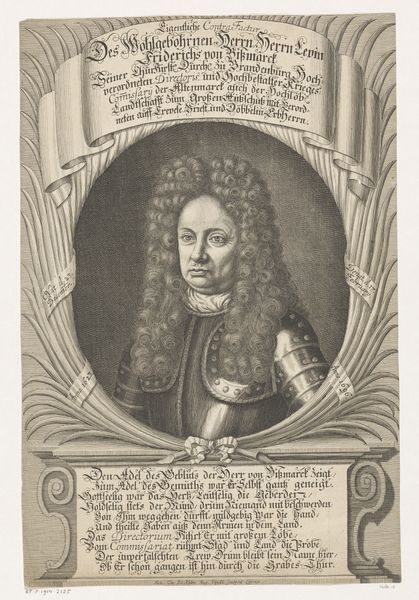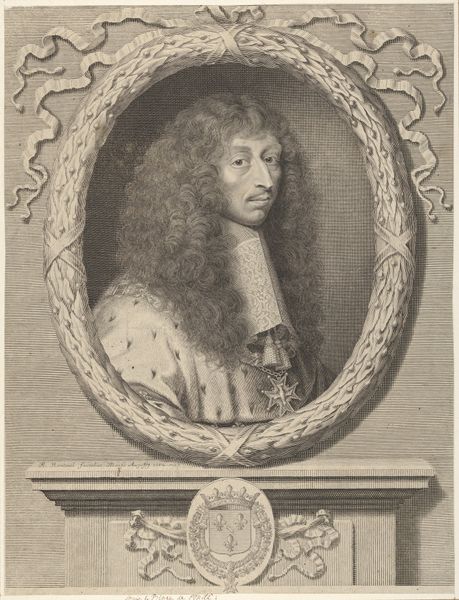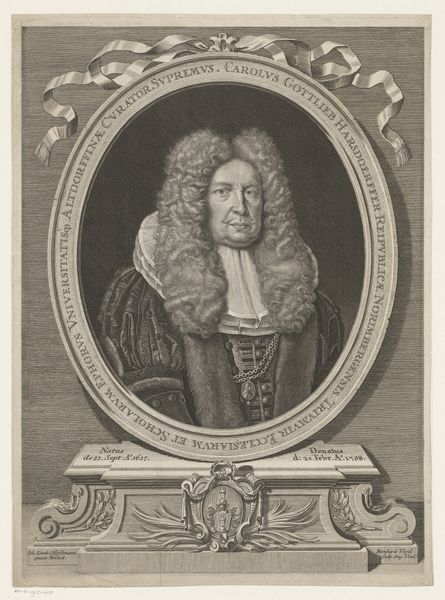
engraving
#
portrait
#
baroque
#
old engraving style
#
archive photography
#
historical photography
#
framed image
#
line
#
history-painting
#
academic-art
#
engraving
Dimensions: height 387 mm, width 290 mm
Copyright: Rijks Museum: Open Domain
Editor: So, here we have Bernhard Vogel's engraving, "Portret van Christoph Andreas Tucher von Simmelsdorf," dating somewhere between 1709 and 1737. It’s a striking portrait, almost theatrical with the heavy drapery and ornate frame. What do you make of it? Curator: It’s fascinating to consider this portrait not just as an image of an individual, but as a carefully constructed representation of power and status within a specific historical context. Christoph Andreas Tucher was clearly a man of importance; how does the Baroque style contribute to conveying that? Editor: I guess the elaborate wig and the formal attire certainly play a part. Curator: Exactly! Think about the social and political climate of the early 18th century. The Baroque era was all about projecting grandeur and authority. The intricate details, the dramatic use of light and shadow – they all serve to elevate Tucher's status. What can that reveal about gender and societal expectations in that time? Editor: That’s true. I hadn't really considered how the portrait reinforces traditional power structures. Curator: Portraits like this often acted as tools to cement a specific social hierarchy, and how that power was inextricably tied to masculinity. Also, note the family crest. Those symbols communicated lineage and privilege. What stories are silenced, though, within such a polished, formal depiction of masculinity and social class? Editor: So, by unpacking the symbolism and considering the social context, we can understand the engraving as more than just a portrait; it’s a visual statement about power, class, and identity in the Baroque era. Curator: Precisely. Looking at the subject, his costume, and how they are portrayed visually gives us cues to analyze and question the foundations of societal structure and representation. Editor: This makes me want to investigate portraiture through a totally new lens!
Comments
No comments
Be the first to comment and join the conversation on the ultimate creative platform.
